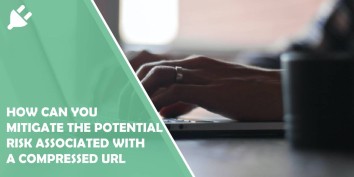Compressed URLs, often referred to as short URLs, have become a ubiquitous feature of the…
In the vast landscape of the internet, URLs play a pivotal role in directing users to websites and online content. However, the rise of compressed or shortened URLs has introduced a layer of ambiguity, leaving users wondering about the destination before clicking. While URL shortening services offer convenience, they can also pose security risks. In this comprehensive guide, we will explore the nature of compressed URLs, the potential risks associated with them, and provide safety tips to ensure your online experiences are secure and free from malicious intent.

Understanding Compressed URLs
Compressed or shortened URLs are created using services that take a long URL and generate a shorter version, making it easier to share, particularly in spaces with character limitations, such as social media platforms. While services like Bitly, TinyURL, and Ow.ly are widely used for their convenience, the very nature of these shortened links obscures the actual destination, raising concerns about the safety and legitimacy of the linked content.
Risks Associated with Compressed URLs
1. Malicious Redirects:
– Cybercriminals can exploit shortened URLs to redirect users to malicious websites designed for phishing attacks, malware distribution, or other harmful activities.
2. Spam and Scams:
– Shortened URLs can lead to spam or scam websites, tricking users into providing personal information, engaging in fraudulent schemes, or unknowingly downloading malware.
3. Loss of Visibility:
– The shortening process removes the transparency of the destination URL, making it challenging for users to discern the legitimacy of the link without clicking.
4. Phishing Attacks:
– Shortened URLs are commonly used in phishing attacks where attackers impersonate trusted entities to deceive users into revealing sensitive information.
Safety Tips for Interacting with Compressed URLs
1. Use URL Unshortening Services:
– Before clicking on a compressed URL, consider using online services that preview the original URL without visiting the site. Websites like CheckShortURL and GetLinkInfo can provide insights into the destination.
2. Hover Before Clicking:
– Hover your mouse over the shortened link without clicking to reveal the full URL in the browser’s status bar. This allows you to assess the link’s legitimacy before navigating to the site.
3. Check the Source:
– Be cautious when clicking on shortened URLs from unknown or untrusted sources. Verify the credibility of the sender or the platform sharing the link.
4. Use Browser Extensions:
– Browser extensions like “Unshorten.It” can automatically reveal the original URL when you encounter a compressed link, adding an extra layer of transparency.
5. Be Wary of Unsolicited Messages:
– Avoid clicking on shortened URLs sent through unsolicited emails, messages, or social media posts. Legitimate entities usually provide full, recognizable URLs.
6. Enable Link Previews:
– On messaging platforms and social media, enable link previews if available. This feature displays a snapshot or preview of the linked content, giving you a glimpse before clicking.

7. Consider a URL Expander Tool:
– Some online tools and browser extensions expand shortened URLs, providing the full link and additional information about the destination. Use these tools to enhance your online safety.
8. Educate Yourself on Recognizing Scams:
– Familiarize yourself with common signs of scams and phishing attempts. Look for unusual domain names, misspellings, or generic messages that raise suspicion.
Safeguarding Against Malicious Intent
1. Keep Software Update:
– Ensure that your operating system, browser, and security software are up-to-date. Regular updates often include security patches that protect against evolving online threats.
2. Use a Reliable Antivirus Program:
– Install reputable antivirus or anti-malware software to provide an additional layer of protection against malicious links and potential threats.
3. Employ a VPN for Added Security:
– Consider using a Virtual Private Network (VPN) to encrypt your internet connection and enhance your overall online privacy and security.
4. Enable Two-Factor Authentication:
– Strengthen your accounts by enabling two-factor authentication (2FA) wherever possible. This extra layer of security helps protect your accounts even if credentials are compromised.
5. Report Suspicious Links:
– If you encounter a suspicious or malicious link, report it to the platform or service where you found it. Many online platforms actively work to identify and block harmful content.
As the internet continues to evolve, so do the tactics employed by cybercriminals. Compressed URLs, while convenient, can be manipulated for malicious purposes. By incorporating the safety tips outlined in this guide into your online practices, you can navigate the web with increased awareness and protect yourself from potential threats. From using URL unshortening services to verifying the source of links, these proactive measures empower you to stay vigilant, ensuring that your online experiences are secure, transparent, and free from harm.






